Have you ever been to Hooey Mountain?
No, it’s not a mountain owned by Vail or Alterra. Heck, it’s not a real mountain, at all. Instead, it’s the internet home of Hooey Wilks, an avid skier and talented artist from a very real place called Connecticut.
Hooey’s passion for skiing is what inspired her to create a series of photographs that’ve been popping up on my Instagram feed for the past few years. The images, which feature vintage toy skiers in mountainous, snowy settings, are imaginative, whimsical, and full of movement and life. To me, they capture the joy and soul of skiing. And I think they’re fantastic.
Here are a few, so you can see what I mean:
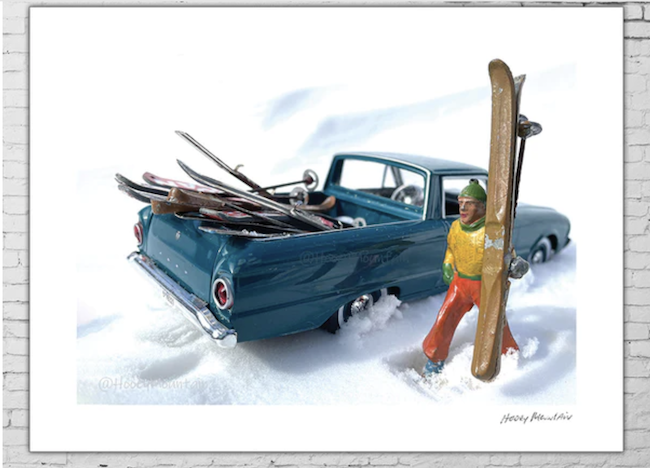
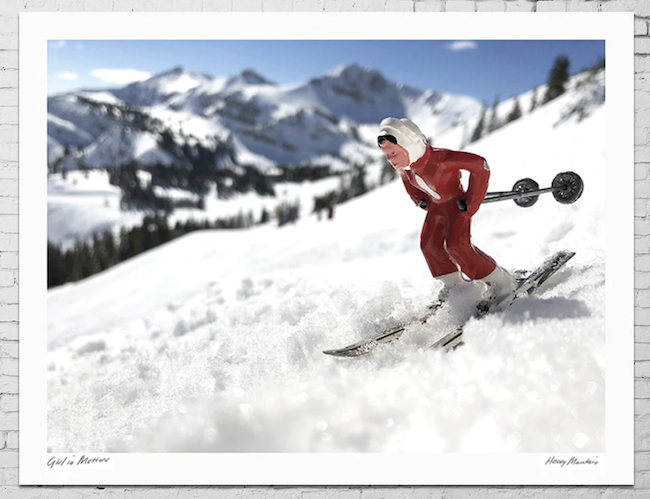
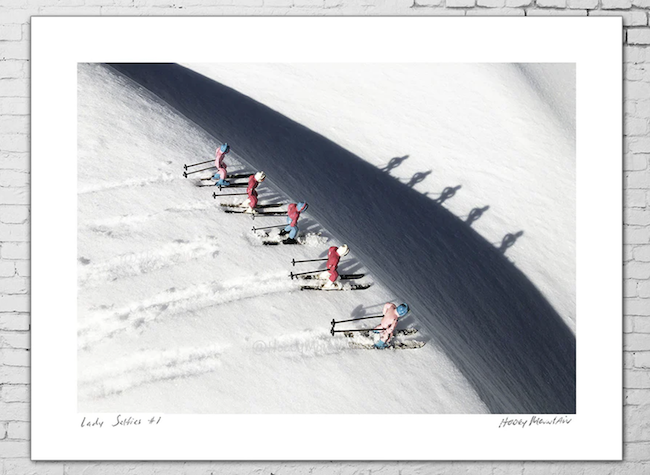
I recently interviewed Hooey to learn how she began creating these unique works of art.
SD: Hooey, I’m delighted to speak to you! I love your images. They’re such a different take on the usual pictures we see of skiers.
HW: Thanks! For me, it’s just fun. That’s sort of why I started doing this. At this point of my life. I needed to do some sort of last chapter thing, and I needed something that would just bring joy and happiness. It seemed to me that the world needed that, too.
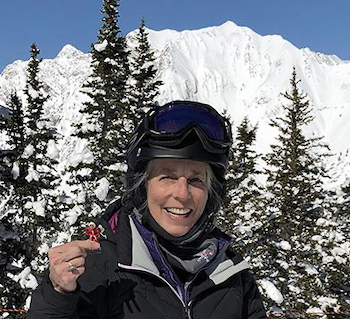
Hooey Wilks
SD: So you haven’t always worked as an artist?
HW: No, not at all. Though it’s strange. People say ‘go back to your roots,’ and when I was 14 I started a barrette painting business that really took off. But then you go to college and you get out and do something else. In the back of my mind, I’ve always been an entrepreneur, even within the corporate world — I worked in Finance, but I’ve always had the urge to create something new. Then I took some time off for my kids, and did some part time stuff around my town that gave me a different set of skills. I wanted to do something portable and entrepreneurial that I could take with me, wherever we wound up. And I wanted to something creative, too.
SD: So how did you get started?
HW: One year I gave my husband a couple of these little skiers that I found in a local antique shop. We just sort of kept adding and adding to them, and the next thing I knew I had like 50 of them all over the house. One year after shoveling the driveway, I took them outside and started taking pictures. At the time I was looking for things to paint, so I was taking pictures, thinking I’d paint them. But when I showed the pictures to my friends, they said, ‘Why are you painting them? These are fantastic just as they are.’ So I decided to give that a try and see where it led.
I started small. I did art shows where you’d stand there with your table, then I took the show on the road. My husband pointed out that mountains made the pictures look grander — better than if I just photographed the figures in snow — so I started incorporating them into my pictures, too.
SD: Is finding the skiers difficult?
HW: I have friends who’ll find these figures at a flea market, send me a picture, and ask if I want them to buy them for me. To me, the faces are important. Sometimes the faces are beat up or they’re painted in a weird way. Right now I have over one hundred of these skiers. There are a couple different companies who’ve made them; one still does. The French ones are harder to find. They’re very dynamic; they look more like they’re backcountry or cross country skiing.
SD: Can you tell me a bit about how you create your images?
HW: It’s kind of like a secret recipe; there are things you don’t want to reveal, I will tell, you, however, that it requires a lot of lying on the ground. You have to get low. I’ve lain down in the Snowbird parking lot to get a great shot with the mountain in the background. I’ve taken pictures that look like it’s a bluebird, glorious spring day, but it’s actually January and the wind is howling and my fingers are freezing. You take a lot of pictures, then you go back and figure out which one works. There’s a lot of time on the computer. I never, ever Photoshop something to look like it’s somewhere it isn’t. Sure, sometimes I have to do a bit of processing or enhancement. For example, the snow may look too gray or blue. Because as much as you want to have it as close to perfect when you take the picture, there’s usually some editing that needs to be done. That said, the less editing, the better.
SD: I notice you don’t identify any mountains in your pictures. Is there a reason for that?
HW: Yes, because I’d like to focus more on the whole skier experience. Everyone has their favorite day or their favorite thing that speaks to them, so I don’t think my images should be tied to a particular place. A bluebird day is a bluebird day, whether it’s Bromley or Mad River or Jackson Hole. To be fair, I don’t want to not sell someone their favorite print because it wasn’t taken at their home mountain. So I try to keep it anonymous.
SD: Are you working on other things, too?
HW: Lately I’ve been going beyond the skier photos. I have a couple different series going on. For example, right now I’m doing a whole series on corduroy. One day last winter, I was up on a mountain early in the morning taking pictures before the skiers got there, and I took all these pictures of corduroy. I printed out 25 or 40 individual prints and put them together in a way that creates movement where there’s no movement at all. That’s one of my things: I always try to make it so you can picture the movement.
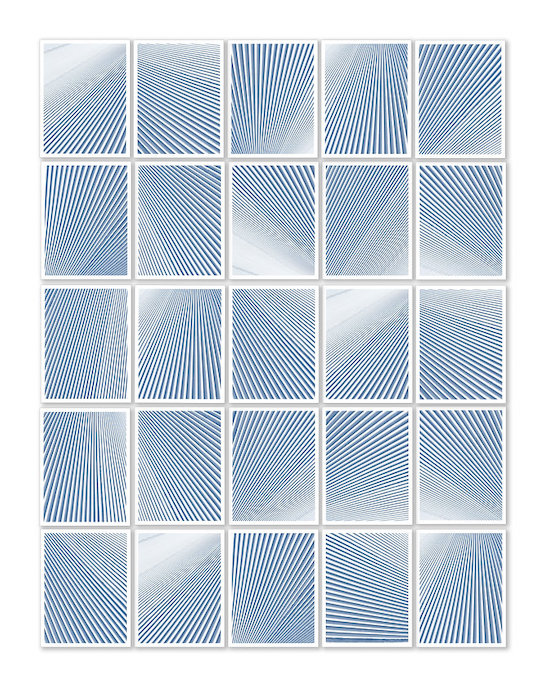
Corduroy Study, by Hooey Wilks
SD: Have you been surprised as to which of your images people prefer?
HW: Totally. When I first started, I think I had 16 images up there, and the ones that I thought were really going to sell, I think I sold three of them. That’s why you have to be flexible. You have to be willing to pivot. The things that I think are going to be home runs don’t always sell, and some of the stuff I’m not sure about sells great. So that’s why I’m constantly adding stuff.
SD: You’re very lucky in that you’ve been able to marry your art with your passion.
HW: I think it’s been a success because I truly love to ski, and I think it shows. The life of an artist isn’t glamorous, but if you pair it with something you love, then you can justify it a bit better.
To see more of Hooey’s work, be sure to visit Hooey Mountain. Go here. And to follow her on Instagram, go here.
